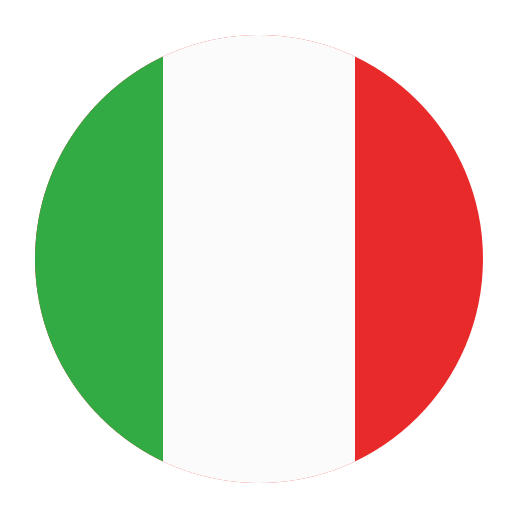Learning a new language is always an exciting journey, and Italian is no exception. With its melodic flow and rich cultural heritage, Italian is a language that can be both enjoyable and rewarding to learn. One of the fundamental aspects of acquiring any language is building a robust vocabulary. Knowing the words for colors and patterns is essential, not only because these terms are frequently used in everyday conversations but also because they help you describe the world around you more vividly. In this article, we will explore the Italian words for colors and patterns, providing you with a comprehensive guide to enhance your Italian vocabulary.
Basic Colors in Italian
Colors are among the first things you learn when studying a new language. They are omnipresent in our daily lives, and knowing how to describe them is crucial. Here are the basic colors in Italian:
– **Rosso** – Red
– **Arancione** – Orange
– **Giallo** – Yellow
– **Verde** – Green
– **Blu** – Blue
– **Viola** – Purple
– **Rosa** – Pink
– **Marrone** – Brown
– **Grigio** – Gray
– **Nero** – Black
– **Bianco** – White
It’s interesting to note that some colors in Italian, such as “viola” (purple) and “rosa” (pink), are derived from the names of flowers: “viola” (violet) and “rosa” (rose), respectively.
Shades and Tints
Once you have mastered the basic colors, it’s time to delve into shades and tints. Knowing how to describe different shades of colors can make your descriptions more precise and engaging. Here are some common terms you might find useful:
– **Chiaro** – Light (as in light color)
– **Scuro** – Dark
– **Pastello** – Pastel
– **Vivace** – Bright
– **Opaco** – Dull
For example, if you want to say “light blue,” you would say “azzurro chiaro.” Conversely, “dark blue” would be “blu scuro.” Combining these terms with the basic colors can give you a whole new array of descriptive possibilities.
Describing Patterns in Italian
Patterns add another layer of detail to your descriptions, allowing you to convey more specific visual information. Here are some common patterns you might encounter:
– **A righe** – Striped
– **A quadri** – Checkered
– **A pois** – Polka-dotted
– **A fiori** – Floral
– **A quadretti** – Gingham
– **A zigzag** – Zigzag
– **A scacchi** – Chessboard pattern
– **A fantasia** – Patterned (general term for any kind of pattern)
For example, if you want to describe a shirt with stripes, you would say “una camicia a righe.” If the shirt has a checkered pattern, you would say “una camicia a quadri.”
Combining Colors and Patterns
Combining colors and patterns in your descriptions can make your Italian much more colorful and vivid. Here are some examples:
– **Un vestito a fiori rossi** – A dress with red flowers
– **Una camicia a righe bianche e nere** – A shirt with black and white stripes
– **Un tappeto a zigzag blu e bianco** – A rug with blue and white zigzags
Useful Phrases and Sentences
To help you use these new vocabulary words in context, here are some useful phrases and sentences:
– **Che colore preferisci?** – What is your favorite color?
– **Mi piace il blu perché è un colore rilassante.** – I like blue because it is a relaxing color.
– **Questa giacca è troppo scura.** – This jacket is too dark.
– **Preferisco i vestiti a righe.** – I prefer striped clothes.
– **Hai visto quella gonna a pois?** – Have you seen that polka-dotted skirt?
Practice Makes Perfect
The best way to retain and effectively use new vocabulary is through practice. Here are some tips to help you incorporate these new words into your Italian language practice:
1. **Label Objects:** Go around your home and label objects with their colors in Italian. For example, label a red chair as “sedia rossa.”
2. **Flashcards:** Create flashcards with the Italian word on one side and the English translation on the other. This can help reinforce your memory.
3. **Descriptive Writing:** Try writing short paragraphs describing a scene or a person using as many colors and patterns as possible.
4. **Conversation Practice:** Engage in conversations with language partners or tutors where you specifically focus on using color and pattern vocabulary.
5. **Art Projects:** If you’re artistically inclined, try drawing or painting and then describing your artwork in Italian, focusing on the colors and patterns you used.
More Complex Color Terms
As you become more advanced, you might want to expand your vocabulary even further with more complex color terms. Here are some additional color-related words that can enrich your descriptions:
– **Turchese** – Turquoise
– **Acquamarina** – Aquamarine
– **Argento** – Silver
– **Oro** – Gold
– **Corallo** – Coral
– **Smeraldo** – Emerald
– **Lavanda** – Lavender
For example, you might describe a piece of jewelry as “un anello d’oro” (a gold ring) or a dress as “un vestito color lavanda” (a lavender-colored dress).
Idiomatic Expressions Involving Colors
Colors are not just used for descriptions; they also appear in many idiomatic expressions. Here are a few common Italian idioms involving colors:
– **Essere al verde** – To be broke (literally, “to be in the green”)
– **Vedere tutto rosso** – To see red (to be very angry)
– **Romanzo rosa** – Romance novel (literally, “pink novel”)
– **Cronaca nera** – Crime news (literally, “black news”)
– **Essere di umore nero** – To be in a bad mood (literally, “to be in a black mood”)
Understanding these idiomatic expressions can add depth to your language skills and help you understand the cultural nuances of Italian.
Colors in Italian Culture
Colors often carry cultural significance, and Italy is no exception. Here are a few insights into how colors are perceived in Italian culture:
– **Rosso (Red):** Red is a color of passion and vitality. It is often associated with love, energy, and even danger. It is also prominently featured in Italian cuisine, with tomatoes and red wine being staples.
– **Verde (Green):** Green symbolizes nature, hope, and renewal. It is also associated with the countryside and agriculture, which are integral parts of Italian heritage.
– **Bianco (White):** White represents purity and simplicity. It is also a significant color in Italian weddings, symbolizing the bride’s innocence.
– **Nero (Black):** Black is often associated with elegance and formality. However, it can also signify mourning and is commonly worn at funerals.
Conclusion
Mastering the vocabulary for colors and patterns in Italian is an excellent way to enrich your descriptive abilities and bring your language skills to life. From basic colors like **rosso** and **blu** to more complex terms like **turchese** and **smeraldo**, these words allow you to paint vivid pictures with your words. Additionally, understanding patterns and their Italian terms can help you describe the world around you in more detail.
Remember, language learning is a gradual process, and the key to success is consistent practice. Whether you’re labeling objects around your home, using flashcards, or engaging in conversations, every little bit helps. With dedication and practice, you’ll soon find yourself confidently using Italian colors and patterns in your everyday conversations.
So, what are you waiting for? Start incorporating these colorful Italian terms into your vocabulary today and watch your language skills bloom! Buona fortuna! (Good luck!)

